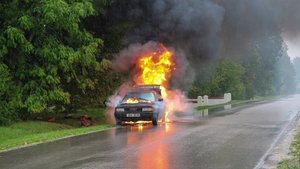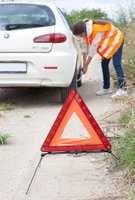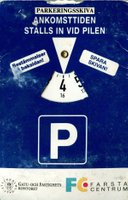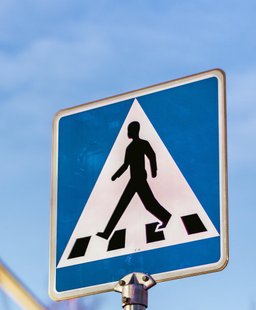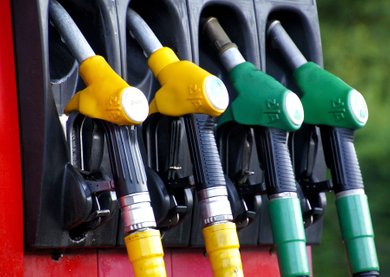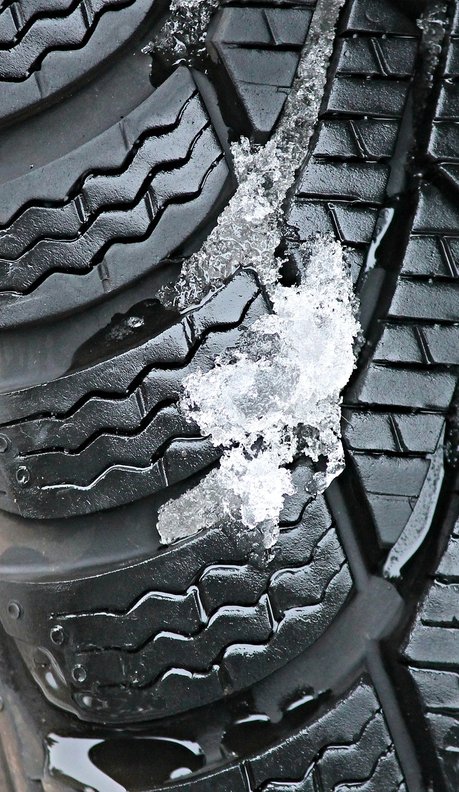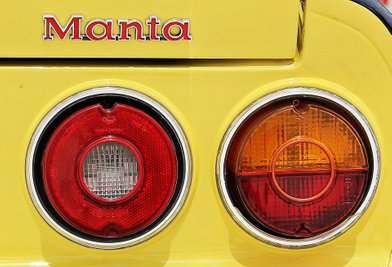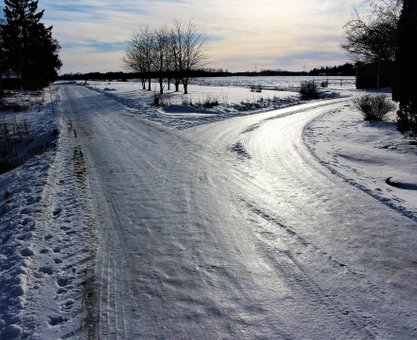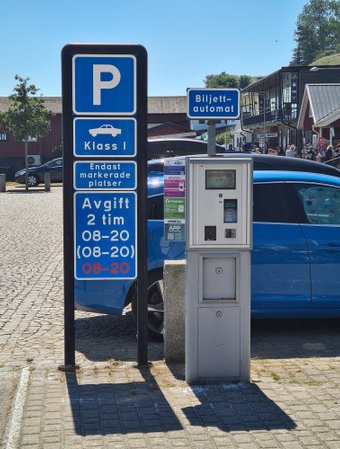Overlander's Guide to Sweden
Driving in Sweden with an Overlanding Car or Motorbike
The following applies to vehicles up to 3500kg. Vehicles over 3500kg may have additional requirements.
Arriving in Sweden with your Overlanding Car or Motorbike
Required Paperwork
Sweden does not require any special paperwork for your vehicle when driving across the border. If you are shipping your car to Sweden for your visit, please contact Tullverket and Transportstyrelsen for more information.
You should bring the following with you when entering Sweden:
- Registration papers & proof of valid registration
- Proof of valid insurance
- Passport or proof of EU residency
- Driving licence
Process at the border
There may or may not be a checkpoint at the border. If there is, the inspection of your vehicle and paperwork is usually very quick.
Cost of Entry
Sweden does not charge for entry into the country. Depending on the route you enter Sweden there may be tolls or ferry charges.
Carnet de Passage
Sweden does not require a Carnet de Passage for entry. Sweden does not have an issuing authority for a Carnet de Passage.
Length of Stay
A non-EU/EEA citizen has a maximum permitted stay of 90 days without a visa. For longer stays, a visa or work permit is needed. For more information contact migrationsverket or your local consulate or embassy.
EU/EEA citizens do not require a visa while travelling in Sweden, regardless of length of stay. For more information contact migrationsverket or your local consulate or embassy.
A foreign vehicle can be used in Sweden as long as the owner is not a resident of Sweden.
Leaving Sweden with your vehicle
There are no restrictions to exiting Sweden with a foreign registered vehicle, or for temporarily exiting Sweden with a Swedish registered vehicle.
Off-road Driving in Sweden
Off-Road Driving
Driving off-road is illegal in Sweden, period! The only places off-road driving is allowed are special off-road parks where off-road driving is permitted. Even the land owner is not allowed to drive off-road on his or her property.
Driving on beaches is not permitted.
Driving on tractor trails is not permitted.
Driving on loggin machine tracks is not permitted.
Driving on grass is not permitted unless signs are posted.
Driving off the side of the road to park is not permitted.
If you are caught driving off-road in Sweden, you can be fined and/or serve jail time up to six months, plus be required to pay for restoration of the damages caused by your vehicle.
This includes all motorized vehicles, including but not limited to:
- Cars
- Trucks
- Campers
- Motorcycles
- Mopeds
- Electric bicycles
- Golf carts
- ATVs
- Scooters
The freedom to roam laws do not apply to any motorized vehicle, including electric bikes, regardless if the power assist is used or not.
Driving in Sweden
Vehicle Insurance Requirements
Liability insurance issued in the country of registration and valid for travel to Sweden is mandatory. No additional insurance is required.
Emergency
In case of emergency call 112 from any phone. It will get you to emergency services such as fire, police, and ambulance.
Driving Licence
A valid driving licence is required for driving a motor vehicle in Sweden. All driving licences are valid for shorter stays, but if it does not conform with European standards, an International Driving Permit (IDP) is also required. Foreign passenger car licences are valid for vehicles up to 3500kg, regardless of what the limit is in the country of issue. For vehicles over 3500kg, additional driving licence endorsements are required. Contact Transportstyrelsen for more information.
General Traffic Regulations
This is not a comprehensive list of all regulations. For all regulations, contact Transportstyrelsen for more information.
- Traffic drives on the right side of the road.
- The speed limit inside town limits is 50km/h, on rural roads is 70km/h, and motorways 110km/h unless otherwise posted. The speed limit for a vehicle pulling a trailer is 80km/h.
- Headlights are required to be on at all times when the vehicle is moving.
- Seatbelts are required for all passengers.
- Uncontrolled intersections are governed by right hand rule - Vehicles to the right have right of way. This includes vehicles coming from private or gravel roads.
- The legal limit for alcohol when driving is a blood alcohol level of 0.02%.
- Hand held electronic devices are prohibited to be used while driving. A hands-free phone is allowed while driving.
- Vehicles entering a motorway have the right of way - you are required to give them space to merge.
- Parking is only allowed on the right side of the road.
- Busses pulling out of a bus stop has the right of way if the speed limit is 50km/h or less.
- Pedestrians have the right of way at marked crosswalks.
- There are no restrictions on driving a right hand drive vehicle in Sweden.
- If you have asymetric headlights, you need to cover the asymetric part of the headlight in order to not blind oncoming traffic.
Mandatory Items in Vehicle
- A safety triangle
- A country of registration sticker on the back of your vehicle. European license plates with country designation is acceptable.
Additional requirements exist for vehicles over 3500kg. Contact Transportstyrelsen for more information.
Recommended Items in Vehicle
The following are recommended for you to carry in your vehicle which you may not have considered.
- A parking time indicator - Kalled a "P-Sheeva" These are available in many stores and most manned fueling stations. Set the arrow to your arrival time and leave visible in your windshield when required.
- Safety vest - If you need to stop unexpectedly on the side of the road, a safety vest may save your life. Visibility is poor at times throughout the year, and other drivers may not be able to see you stopped on the side of the road.
Alcohol
Alcohol and driving is strictly prohibited, and is socially unacceptable. A blood alcohol level of 0.02% is considered intoxicated. A level of 0.03% may get your license suspended.
Police, vehicle inspectors, customs personell and the coast guard are all allowed to test your blood alcohol level.
Driving intoxicated is punishable by fine or prison up to six months. Driving with a blood alcohol level of above 0.1% is considered serious intoxication and is punishable by prison up to two years.
Boating
The same alcohol rules applies to boating, with the same consequenses. Boating under the influence of alcohol can get your driving license suspended.
Winter
Winter driving in Sweden varies greatly from north to south, and also depends on the weather. Make sure your vehicle is properly equipped for winter driving.
Items recommended in winter:
- Ice scraper for the windows
- Shovel
- Tow rope
- Blankets
- Warm clothes
- Mobile phone
- Winter tires with at least 5mm and at most 5 years old.
- A bag of sand to spread on ice for traction
- Flashlight (besides your mobile phone)
If you get your vehicle stuck in the winter, do not leave your vehicle unless you know that help is close at hand. It is easy to get lost in winter weather and you risk freezing to death. If you do leave your vehicle, place a note in the windshield with information with which direction you were headed and where you were going.
If your car accidentally leaves the roadway and you are unable to get it back on the road, call 112.
Roads
General Road Quality
The general road quality is fairly good. Regional roads might be small and curvy. In cities and towns speed bumps and one way streets may be encountered. Roundabouts are fairly common.
Swedish roads are divided into three categories:
- Public roads - 140 000km of roads that are maintained by the public road works. These roads are often, but not always, paved. These roads are open to the public.
- Private roads with public funding - These roads are maintained by the owners of the properties they serve, and part of their funding comes from the government. Most of these roads are gravel. A yellow arrowed sign with red border and black text indicates a private road with public funding. Because they receive public funding, they are required to maintain a certain level of road standard, and they are passable by a normal car. Of the 430 000km of private roads in Sweden, about 75 000km receive public funding. These roads are open to the public.
- Private roads with no public funding - These roads may or may not be open to the public, and they are not required to be kept to any standard. They may be gated or signed stating that they are a private road. You are allowed to drive on them unless signs or gates indicate otherwise. If unsure, it is recommended to not use them.
In winter time Nordic winter tires are mandatory in winter road conditions (temperature is below 5 degrees C). Smaller roads in the countryside might not be cleared during winter. Snow depths can vary from nothing in the south, to several metres deep in the far north.
Off Road
Driving off road is not permitted in Sweden. This includes pulling off the side of the road unless it is marked as a parking space. You are allowed to park to the side of the road if necessary as to not block traffic, but only if you can do so without damaging the shoulder or ground. Venturing more than a few metres out from the side of the road or into the grassy area is considered off road driving.
Road Signs
Swedish road signs conform to the 1931 Geneva Convention concerning the Unification of Road Signals, and the later Vienna Convention on Road Signs and Signals from 1978.
Toll Roads
Sweden has very few toll roads. There are some bridges that require a toll, as well as some ferry lines. There are also tolls in and around Stockholm and Gothenburg. Check with the local authorities to find out if your vehicle requires paying a toll in these cities.
Police Checkpoints
Checkpoints are uncommon, and when they exist are often sobriety checks. At sobriety checks the police will also check your driving licence and registration. This will take a few minutes. Police may stop any car and perform a safety inspection if they feel it is warranted.
The military is not allowed to do police work in Sweden. Therefore, any military checkpoint is for military vehicles only.
Equipment and Fuel
Fuel Quality and Availability
Gasoline/petrol is often an E10 mix with 10% ethanol. E85 is readily available at most refuelling stations. The diesel mixture varies from summer to winter, with winter diesel being less prone to thicken when cold.
Electric charging stations have become increasingly plentiful, especially in larger and medium sized towns.
Fuel is usually paid for with a credit or debit card. Not all refuelling stations, especially unmanned ones, take cash.
In the countryside fuel is generally available at most smaller towns, but it is advised to keep at least half a tank if going remote, especially in northern Sweden.
Tires
Most Swedish roads are in good or very good condition. This is true for the gravel roads as well. Very few, if any, roads in Sweden require aggressive treads to drive on. We recommend no more aggressive tires than AT tires. Winter conditions require winter tires (see below). You are not allowed to mix studded, non-studded winter tires or summer tires on the same vehicle.
When planning your trip, remember to plan to have legal tires throughout your trip as weather conditions change and tires wear, not just on entry.
Wide tires
Tires mounted on your vehicle may not extend outside the bodywork while driving in Sweden. This is regardless of if it is legal where the vehicle is registered. A vehicle with tires sticking outside the bodywork may be fined or in extreme cases forbidden to continue to be driven until corrected. In the latter case you are not allowed to continue on your journey until you have brought your vehicle to the authorities for inspection.
Summer tires
Summer tires require a minimum tread depth of 1.6mm. We recommend planning for a minimum of 3mm at the end of your journey. Sudden rain squalls are not uncommon in the summer, bringing a high risk of hydroplaning.
Winter Tires
Sweden requires approved winter tires be mounted on your car during the period December 1st - March 31st when winter conditions exist. Winter conditions are if there is any snow, frost or ice on any part of the roadway. Consider it to be winter conditions if the temperature is below 5 degrees C. If travelling to Sweden during the winter months, equip your vehicle with winter tires.
Approved winter tires are:
- marked with the symbol 3- peak- mountain-snowflake (3PMSF) or
- marked with M+S, M-S, M.S., M&S, MS or Mud and Snow. or
- studded
All winter tires must have a minimum tread depth of 3mm. Remember that not all M+S tires are approved for use in Sweden. Consult the manufacturer of your tires for information on approved nordic tires.
Studded tires are allowed to be used October 1st to April 15th.
If you are pulling a trailer, winter tires are required on the trailer as well. If the car has studded tires, the trailer tires require studded tires as well. If you have non-studded winter tires on your car the trailer may have either non-studded or studded winter tires.
You are not allowed to mix studded and non-studded tires on your vehicle.
Note that if you are planning a trip in the future, the regulations regarding winter tires will change on December 1st 2024. Tires only marked with M+S will no longer be allowed as winter tires in Sweden. Tires will need to be marked with either the 3PMSF symbol or be studded.
Vehicle Lighting
You are required to keep your headlights on whenever your vehicle is in operation. Swedish cars often have this as an automatic feature.
Additionally:
- Front fog lights are allowed during the day in foggy or snowy situations when you would be blinded by your own headlights.
- Front fog lights are allowed to be used during the day in place of your headlights.
- Front fog lights are not allowed in conjunction with your low beams.
- Rear fog lights are allowed day or night, but only when foggy or snowing out.
- You are expected to use your turn signals.
- If you park along a rural route at night, you are expected to leave your parking lights on.
Driving Technique
General
Swedish traffic is not fast paced. People generally drive defensively and at the speed limit. You are expected to use your turn signals and make complete stops at STOP signs.
You are expected to dip your high beams quickly. Especially if your car is equipped with extra lights.
Summer
Swedish summers are known for their long days of sunshine and the midnight sun. It is easy to forget the time of day while driving since the sun sets so late. When driving long distances, make sure to take breaks and keep track of the time so as to not fall asleep at the wheel.
Most roadwork in Sweden is done during the summer months so as to avoid the frost. Roadwork can cause major delays in travel.
Wildlife
Rural Sweden is full of wildlife, and vehicular encounters with wildlife are not uncommon. Exercise caution when driving in rural Sweden as to not have a wildlife collision.
Wildlife is most active during dawn and dusk, so take special care during these times.
Winter
Winter driving in Sweden varies greatly from north to south, and also depends on the weather. Make sure your vehicle is properly equipped for winter driving.
If you get your vehicle stuck in the winter, do not leave your vehicle unless you know that help is close at hand. It is easy to get lost in winter weather and you risk freezing to death. If you do leave your vehicle, place a note in the windshield with information with which direction you were headed and where you were going.
General driving technique for winter driving includes:
- Keep a longer following distance
- Avoiding panic stops
- Avoid sudden steering movements
- Be extra aware of traffic around you. Your stopping distance can increase drastically.
- Keep both front and rear lights clear of snow. Sometimes you need to stop and clear your lights.
Parking
Parking
Parking outdoors is usually ok as residents do that. Do not leave visible or valuable items in the car, especially in bigger cities.
The parking rules are sometimes tricky. Avoid parking in cities in places where no one else parks, since that might result in a fine.
- Read the applicable parking signs. If they seem confusing, remember that Swedes feel the same way.
- It's forbidden to park within 10 metres from a street crossing, a bike crossing or pedestrian crossing.
- It is forbidden to park a light truck (less than 3500kg) or camper on a parking lot designated with a passenger car symbol.
- It is forbidden to park on a thoroughfare outside city limits. A thoroughfare is marked with a yellow diamond with a white border.
- You are allowed to park along rural roads that are not a thoroughfare. You are only allowed to pull off far enough so that you are not blocking traffic. You may not park so that you obstruct traffic or view for other drivers. Be careful with ditches and soft shoulders. These may not be visible until it’s too late. If the car is to be parked during dusk, dawn, or night you must turn on the parking lights.
- Many places require an arrival time indicator. They are available in many shops and gas stations. Called "P-skiva" in Swedsih.
- You may only park on the right side of the road.
- If you must stop where you are not allowed to park because of vehicle breakdown, you are required to put on your hazard lights, and out your warning triangle if the speed limit is above 50km/h.
